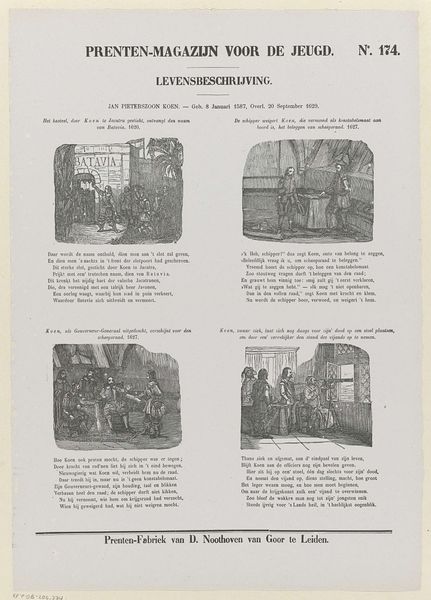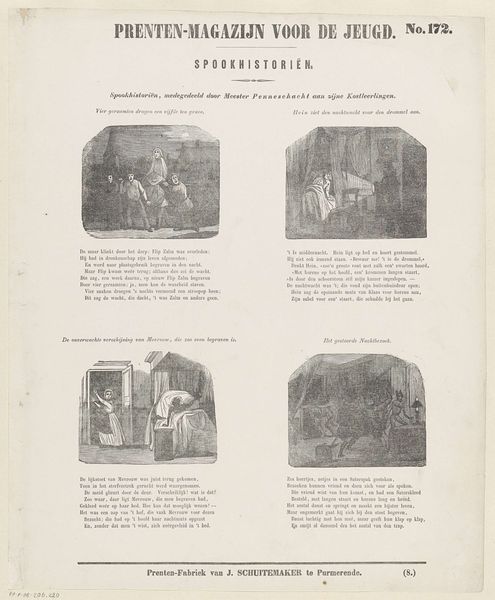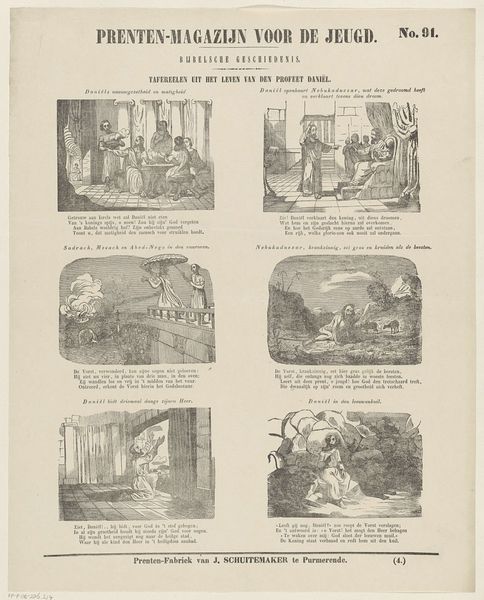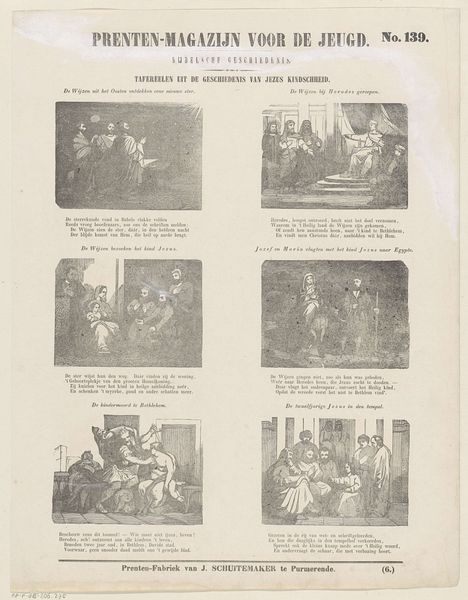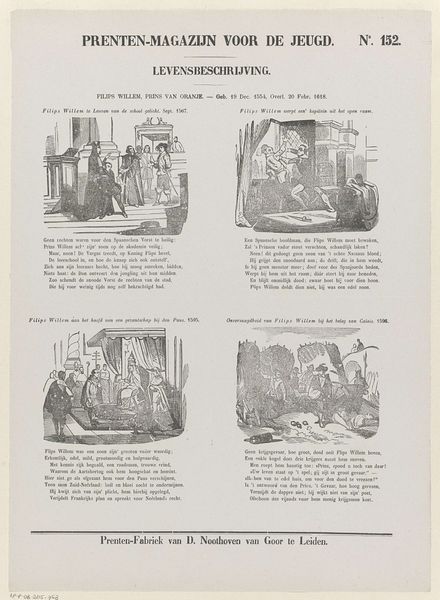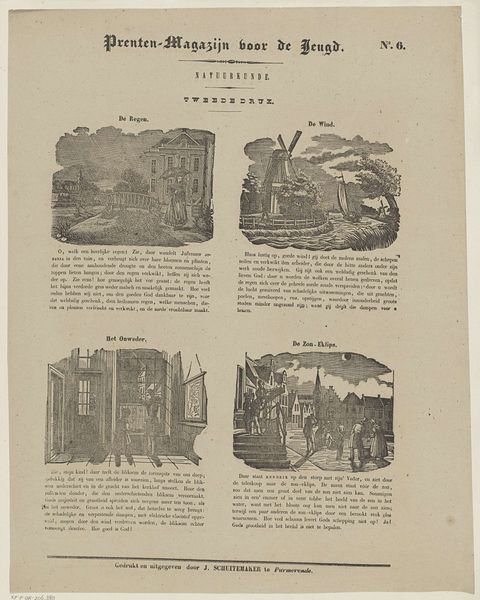
Spookhistoriën, medegedeeld door Meester Penneschacht aan zijne kostleerlingen 1850 - 1881
0:00
0:00
Dimensions: height 414 mm, width 310 mm
Copyright: Rijks Museum: Open Domain
Editor: Here we have "Spookhistoriën, medegedeeld door Meester Penneschacht aan zijne kostleerlingen" or "Ghost Stories, Told by Master Penneschacht to his Boarding Students", an engraving print from somewhere between 1850 and 1881, attributed to Dirk Noothoven van Goor. There's almost a comic-book quality, a clear method of reproduction and distribution on display. What's striking about this work to you? Curator: Well, it immediately draws my attention to the means of its making. The printed medium itself, produced en masse, speaks volumes. Consider the socio-economic context of mid-19th-century Netherlands. Who had access to this print, and how did it circulate? Was it a means of moral instruction for the youth? It seems like the labour involved in creating the images and texts for mass consumption is key here, pointing towards a burgeoning print industry. Editor: So, the commercial aspect is significant? Like it was made in a factory, almost. Curator: Precisely. And the use of engraving—a time-consuming process—highlights the tension between artisanal skill and industrial production. The standardization inherent in printmaking also begs questions about authorship. Was Van Goor the sole creator, or were there workshops and assistants involved? These “Spookhistoriën”, presented in distinct frames like a magazine or newspaper, also hint at changing methods of media dissemination. Editor: It's fascinating how analyzing the material processes opens up these broader questions of labor and consumption. It makes you wonder who really told those "ghost stories". Curator: Absolutely. Focusing on materiality offers a different way of understanding Romanticism, away from idealised visions, toward grounded material conditions and the everyday consumption of reproducible images.
Comments
No comments
Be the first to comment and join the conversation on the ultimate creative platform.

